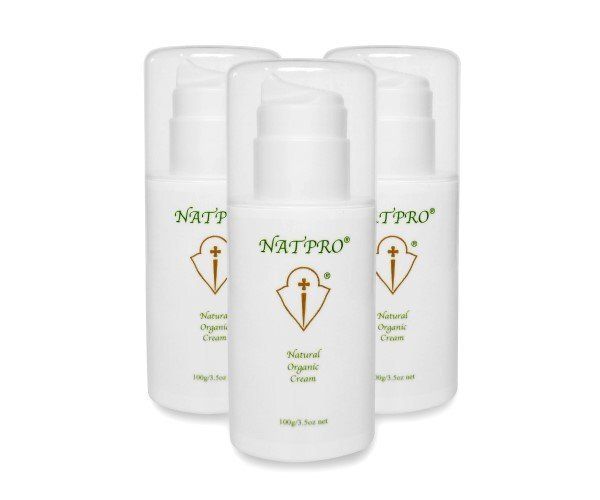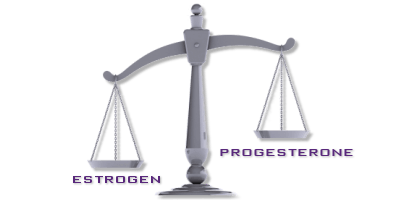THE HISTORY OF PROGESTERONE
Progesterone: The Oldest Hormone and Its Evolutionary Legacy
When we think of hormones, we usually imagine modern biology — molecules regulating reproduction, metabolism, or mood. Yet some hormones are far older than humans, animals, or even plants. Among these, progesterone is widely regarded as one of the most ancient, with a history stretching back hundreds of millions of years.
Progesterone: More Than a Reproductive Hormone
Progesterone is best known today as a key reproductive hormone in mammals, playing a central role in pregnancy and menstrual cycles. But its evolutionary roots run much deeper. Evidence suggests progesterone has existed for at least 500 million years, appearing early in the lineage of vertebrates.
A groundbreaking discovery in 2010 revealed progesterone molecules in walnut trees. This finding overturned the assumption that the hormone was exclusive to animals. Instead, it suggested that progesterone might function as a universal bio-regulator, present across kingdoms of life. Some scientists propose that progesterone may even date back billions of years, predating the divergence of plants and animals.
Vitamin D3: A Vitamin That Became a Hormone
Another molecule often paired with progesterone in evolutionary discussions is Vitamin D3 (cholecalciferol). Though commonly called a vitamin, Vitamin D3 undergoes a remarkable transformation in the body. After synthesis in the skin or intake through diet, it is converted in the liver to calcitriol, and then in the kidneys (and other tissues) to calcitriol.
Calcitriol is not merely a nutrient — it is a powerful steroid hormone. It regulates calcium and phosphate balance, supports bone health, and influences the activity of hundreds of genes, making Vitamin D3 a central player in physiology far beyond its label as a vitamin.
Ancient Molecular Regulators
The shared story of progesterone and Vitamin D3 highlights a fascinating truth: many molecules we associate with modern human health have deep evolutionary origins. Progesterone may represent one of the first true steroid hormones, while Vitamin D3 illustrates how molecules can cross the boundary between nutrient and hormone.
Progesterone and Vitamin D3 are both made from cholesterol:
New Paragraph
- Progesterone in various organs and cells
- Vitamin D3 by the action of UVB sunlight as it hits the cholesterol which covers our bare skin
In 2009 researchers found that a lack of Vitamin D3 reduced the benefits of progesterone.
They both:
- regulate gene expression
- have a positive fundamental effect on cell differentiation and growth with anti-oxidative and autoimmune anti-inflammatory mechanisms
- positively affect the nervous system by stimulating neurotrophic factors, quenching oxidative hyperactivity, and regulating autoimmune responses. Could it be that these two hormones evolved from the same source but split millions of years ago?

Facts about Progesterone
Molecular Formula C21H30O2 (Carbon 21, Hydrogen 30, Oxygen 2)
Molecular weight 314.46
Synonym 4-pregnene-3,20-dione
Melting point 126 C (259 F)
Bioavailability prolonged absorption
Protein binding 96%-99%
Metabolism hepatic to pregnanediols and pregnenolone
Terminal half-life 13.18 1.3
Excretion renal
Facts about Plant Sterols
Phytosterols bear a molecular resemblance to the cholesterol present in animals. Cholesterol serves as the foundation for the steroid hormones that are naturally produced in animals, including humans.
The following plants and more, contain Phytosterols:
Soy Bean
Dioscorea ~ Species of Yams
Fenugreek
Sisal
Calabar Bean
Various Lilies
Yucca
Some Solanum Species
Maize
Some of these are:
Stigmasterol
Diosgenin
Sitosterol
Campesterol
Hecogenin
Sarsasapogenin
Salasodine
The sterols mentioned above possess a molecular structure that closely resembles that of cholesterol and serve as foundational materials for the synthesis of progesterone. This progesterone is then further converted into testosterone, estrogen, cortisone, and other hormones.
Clearing up the confusion: Where does progesterone really come from?
A great deal of confusion exists around the production and origin of progesterone. Many websites and blogs spread misleading claims — some insist that progesterone comes directly from yam extract, while others argue it is sourced from soy.
In truth, progesterone is not simply “taken out” of any plant. Instead, it is synthesized in laboratories from plant sterols (phytosterols), which are naturally occurring compounds in many plants. These sterols share a structural similarity to cholesterol, making them ideal building blocks for steroid hormones.
Phytosterols are abundant in numerous sources, including:
- Soybeans
- Dioscorea species of yams
- Fenugreek
- Sisal
- Calabar bean
- Certain lilies and yucca
- Various Solanum species (nightshades)
- Maize (corn)
Among the most notable phytosterols used are stigmasterol, diosgenin, beta-sitosterol, campesterol, hecogenin, sarsasapogenin, and solasodine.
From these sterols, chemists synthesize pure progesterone. The final product is chemically identical to the hormone naturally produced in the human body. Importantly, if any other substances from the plant source remained in the product, it could not legally be called “progesterone.”
The key takeaway is simple: it doesn’t matter whether the starting material is yam, soy, or another plant. The end product is always the same — progesterone, plain and simple.
Progesterone's journey in modern history began with its discovery and isolation by Professor Willard Allen, who initially trained as an organic chemist before turning to the study of medicine. During his time in Professor George Corners' embryology laboratory, they uncovered a substance in the corpus luteum that was vital for sustaining pregnancy.
On 23 September 1929, Willard Allen Ph.D published the first paper on extracting progesterone from the corpus luteum.
In earlier papers of this series, we outlined the preparation and effects of corpus luteum extracts. When administered to recently spayed female rabbits, these extracts consistently induce a distinct histological and physiological condition of the endometrium, reminiscent of early pregnancy, which prior experiments have identified as resulting from the corpus luteum. To date, we have not assigned a specific name to this hormone from the corpus luteum, merely referring to it as a hormone that produces the aforementioned characteristic effects in rabbits. Based on our understanding of its physiological actions, its primary function appears to be to facilitate gestation in castrated rabbits through modifications of the endometrium; therefore, we propose the term progestin for it, signifying a substance that supports gestation.
It was only in 1933 that the pure hormone was isolated and later named progesterone. An article called “Recollections of my Life with Progesterone by Willard Allen recounted the discovery and isolation in 1974.
Progesterone, an unfortunate name in that it is now known as a female hormone, but also a sex hormone. Because of this, many other roles have been overlooked sadly.
Progesterone is NOT a sex hormone, it plays no part in the secondary sexual characteristics which develop at puberty, which are governed by estrogen in females and testosterone in males. There are no differences between men and women other than the luteal phase. Progesterone is secreted primarily by the ovaries in females and the testes in males. Small amounts are produced by the adrenal glands, the brain and the glial cells. It is the precursor to the sex hormones estrogen and testosterone, as well as the adrenal hormones, cortisol and aldosterone.
In 1929 Adolf Butenandt Ph.D isolated estrone, one of a group of steroids known collectively as estrogen. Edward Doisy, discovered estrone. In 1931 Adolf Butenandt isolated aldosterone at the same time confirming the existence of yet another estrogen called estriol. This had been discovered earlier by G F Merrian but was never confirmed.
In 1933, for the first time, the similarity between the molecular structures of androsterone and cholesterol were found. In 1934 Adolf Butenandt isolated a small sample of progesterone from the corpus luteum, corresponding with Willard Allen about their independent discovery.
In 1935 Ernst Laqueur isolated testosterone from the testes. Shortly after, both Adolf Butenandt and Leopold Ruzicka synthesised testosterone from androsterone. They were both awarded the Nobel Prize for Chemistry in 1939.
Around the same time, Percy Julian Ph.D extracted stigmasterol from the West African Calabar bean or Physostigma Venenosum. He was an amazing chemist who was awarded 130 patents and many honorary degrees. He is best known for his work in the industrial synthesis of human steroids from plant sterols. His work later led to the production of cortisone. He isolated stigmasterol from soybean oil in 1939. By 1940 he was able to produce the hormone progesterone in bulk.
In 1936 Russell Market isolated the steroid pregnanediol from an extract of pregnant mares urine. He converted this to progesterone in 1937. In 1938 he found the sterol sarsasapogenin from the sarsaparilla plant, could be converted into progesterone using a technique which has since become known as the Market Degradation. However, sarsaparilla was expensive so he continued searching and found the sterol diosgenin in 1941. The diosgenin in the Dioscorea species of a yam growing wild in Mexico which could also be converted into progesterone. Sadly no pharmaceutical company was interested in his discovery. So, in 1943 he used a friend’s lab and converted the diosgenin into three kilograms of progesterone. In 1944 he formed Syntex in Mexico City with two partners, a company which competed with Percy Julian’s soybean progesterone.
Because of the low cost of Russell Market’s progesterone, it later became the preferred precursor to cortisone and by 1951 Syntex had developed the first oral contraceptive from progesterone.

